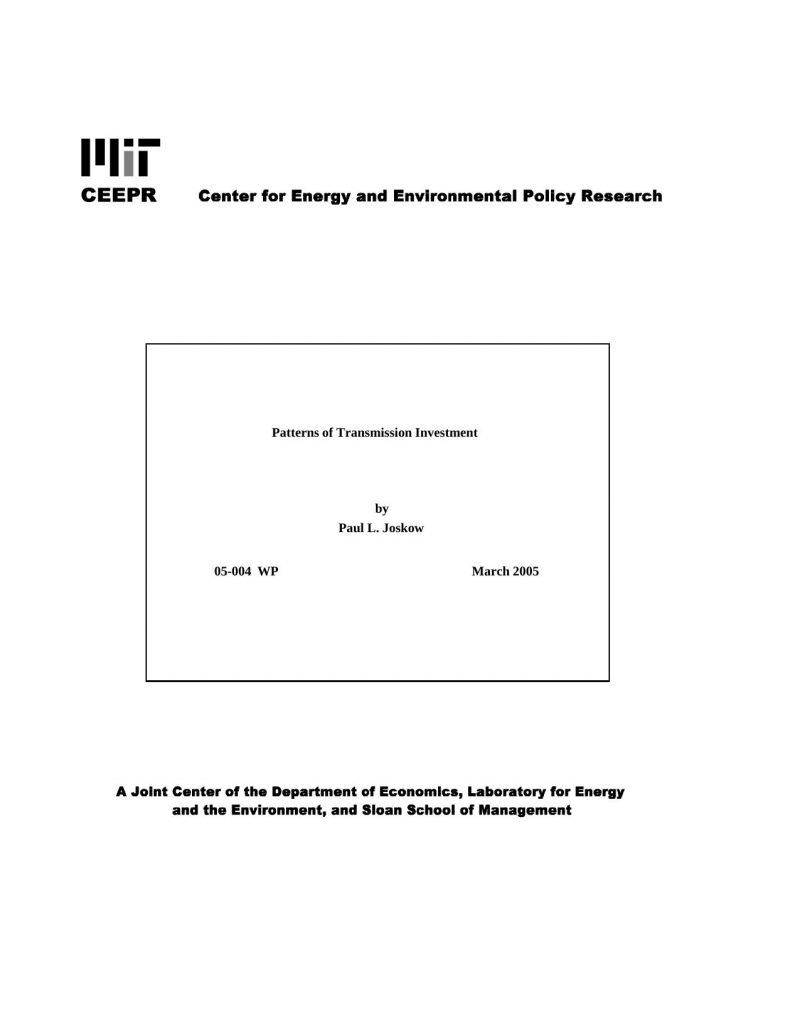Patterns of Transmission Investment
Paul L. Joskow
05-Mar
This paper examines a number of issues associated with alternative analytical approaches for evaluating investments in electricity transmission infrastructure and alternative institutional arrangements to govern network operation, maintenance and investment. The economic and physical attributes of different types of transmission investments are identified and discussed. Alternative organizational and regulatory structures and their attributes are presented. The relationships between transmission investments driven by opportunities to reduce congestion and loss costs and transmission investment driven by traditional engineering reliability criteria are discussed. Reliability rules play a much more important role in transmission investment decisions today than do economic investment criteria as depicted in standard economic models of transmission networks. These models fail to capture key aspects of transmission operating and investment behavior that are heavily influenced by uncertainty, contingency criteria and associated engineering reliability rules. I illustrate how the wholesale market and transmission investment frameworks have addressed these issues in England and Wales (E&W) since 1990 and in the PJM Regional Transmission Organization (RTO) in the U.S. since 2000. I argue that economic and reliability-based criteria for transmission investment are fundamentally interdependent. Ignoring these interdependencies will have adverse effects on the efficiency of investment in transmission infrastructure and undermine the success of electricity market liberalization.



